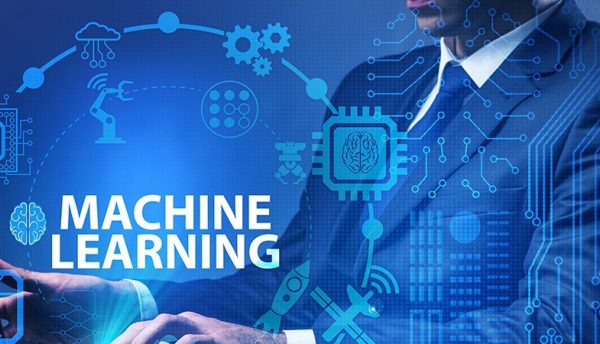To make decisions more quickly and accurately, enterprises are increasingly turning to Machine Learning, arguably today’s most practical application of Artificial Intelligence (AI). Machine Learning is a type of AI that allows software applications to become more accurate at predicting outcomes without being explicitly programmed to do so. Machine Learning algorithms use historical data as input to predict new output values. Industry pundits share insights why Machine Learning has been made a central part of business operations.
As organisations emerge from the lockdown restrictions that were imposed on businesses because of the COVID-19 pandemic, Machine Learning has taken centre stage because it gives enterprises a view of trends in customer behaviour and business operational patterns, as well as supports the development of new products. Many of today’s leading multinational companies, such as Facebook, Google and Uber, have made Machine Learning a central part of their operations. Machine Learning has become a significant competitive differentiator for many companies across the Middle East and Africa (MEA).
According to research firm Gartner, the adoption of Machine Learning in the enterprise is being catalysed by Digital Transformation, the need for democratisation and the urgency of industrialisation. The firm says 48% of respondents to the 2022 Gartner CIO and Technology Executive Survey have already deployed or plan to deploy AI/Machine Learning in the next 12 months. And Gartner said that the on-going Digital Transformation requires better and faster but also ethical decision making, enabled by advances in decision intelligence and AI governance.
Gartner said one of the most prominent reasons why the IT industry is seeing an increasing enterprise adoption of Machine Learning is the desire to bring the power of Machine Learning to a widening audience – the democratisation of data science and Machine Learning (DSML), lowering the barrier to entry which is enabled by technical advances in automation and augmentation.
Farhan Choudhary, Principal Analyst, Gartner, said to assess where Machine Learning can be applied in the enterprise, the CIO and IT team first need to determine the “what” of the problem statement, for example, “what” business KPIs does the organisation want to be impacted through the work in Machine Learning, and second, the “how” of the problem statement, i.e., how will the organisation accomplish this task.
Choudhary said Machine Learning can be applied across many parts of the business, some applications or opportunities could be low hanging fruits, some could be money-pits or some cutting edge. He said a thorough and systematic assessment of opportunities should be conducted before determining “where” Machine Learning can be applied by enterprise IT, and where a democratised approach can be followed.
“This should be a top-down approach. Let’s assume we’re in retail business and we want to leverage Machine Learning while working in collaboration with enterprise IT to generate tangible business value. The first order of business is to conduct an assessment on business value we expect the project to generate or KPIs that it would impact, and the feasibility of using Machine Learning in the enterprise. Say our priorities are revenue growth, and we want to use Machine Learning to impact the volume of sales; then, this could be done through use of Machine Learning in products and services, sales and marketing or in customer service (these are our separate lines of businesses that can leverage Machine Learning),” he said.
Choudhary pointed out that there are opportunities in sales and marketing, R&D, corporate legal, human capital management, customer service, IT operations, software development and testing, and many other areas where Machine Learning can be applied.
Mike Brooks, Global Director, Asset Performance Management, Aspen, said: “Machine Learningalgorithms are basically free from many open sources. It seems everybody is using it but Machine Learning itself is hardly the secret sauce, but it is how you use it and what for. The biggest issue with Machine Learningis the data science skills required to implement and the absolute necessity to engage the subject matter experts with deep familiarity of the problem space, including perhaps, process, mechanical, reliability, planning/scheduling personnel, etc.”
Brooks said Aspen has embed Machine Learningand engineering smarts in anomaly and failure/degradation agents that exercise every few minutes to do the Machine Learning and guidance to ensure they hunt for causation rather than simple correlation is differentiating methodology.
“The methodology copied from the iPhone ideas is that the smarts are on the inside doing the complex and hard work, so you do not have to. That approach assures it is easier and faster to do Machine Learningimplementations on specific equipment with an application that scales rapidly and easily, meaning faster time to cash for many assets. The alternative is a pure Machine Learning approach on a specific Machine Learning platform that takes the user nowhere near the problem space where every application is an open project every time complete with fragility and grand requirements for domain expertise.”
With Machine Learning witnessing enterprise-wide adoption of the technology in various business environments across MEA, organisations are being urged to establish a business case before embarking on any project.
Ramprakash Ramamoorthy, Director, AI Research, ManageEngine, said since the onset of the pandemic, the first touchpoint for many businesses has been digital. Ramamoorthy said organisations must remain digitally competitive to stay afloat, and they achieve this by implementing newer technologies like Machine Learning. He said another factor is the ongoing AI summer, during which there have been a lot of investments in AI and other associated technologies, which in turn has increased the adoption of Machine Learning across the globe.
Ramamoorthy pointed out that because Machine Learning enables enterprise software to move from process automation to decision automation, using Machine Learning involves rewriting current, traditionally deterministic processes and workflows to make them probabilistic.
“For instance, a traditional anomaly system uses the bell curve to identify anomalies, whereas an Machine Learning-powered anomaly system identifies anomalies along with the probability of an outage occurring. CIOs have to drive these changes and incentivise teams to use and integrate new technologies like ML into their everyday workflows by citing the impact they could have on business growth,” he said.
Walid Issa, Senior Manager, Pre-sales and Solutions Engineering – Middle East Region, NetApp, said Artificial Intelligence and Machine Learning have moved beyond the realm of concept into real-world application, representing the great opportunity to stay competitive, drive growth, and cut costs.
Issa said AI and ML are well suited in different verticals such as manufacturing, healthcare, telecom, public sector, retail, finance and automatise. “If I select healthcare as an example, Artificial Intelligence is transforming healthcare in ways we never thought possible. And it really is all about data. Using data, AI and ML can help healthcare professionals make more informed, accurate, and proactive assessments and diagnoses. The ability to analyse data in real time enables healthcare professionals to improve the quality of life for patients and ultimately save lives. This will enable proactive diagnoses using smarter healthcare tools, help physicians find the right data faster and keep patients and healthcare organisations safe from cyber criminals and attacks,” he said.
CIOs and IT leaders should involve business to ensure buy-in for a Machine Learning system deployment in their organisation as that ensures success in the organisation.
Chris Royles, EMEA Field CTO, Cloudera, said CIOs and IT leaders will be influential in building and maintaining a data culture in the organisation. Royles said helping develop a data literacy programme and working across lines of business to instill the importance of data in each domain is an important start. “We then suggest a democratised approach to data management where ownership of the business domain and data problems are managed by those closest to the systems. It is then for each domain to identify the opportunities they can apply to their data processes to introduce Machine Learning,” he said.
Kevin Thompson, Cloud Operations Manager, Sage Africa, Middle East and Asia Pacific, said one of the key elements to consider is change management since ML and AI could potentially take over many of the tasks human workers currently execute manually. Thompson said businesses should look at how these new technologies can augment, rather than replace their people, and show people how the technology will free them from routine, repetitive processes so they can focus on work that needs more creative, strategic, or emotional intelligence.
According to Thompson, within a few years, ML will be so deeply embedded into every computer system that the industry will take it for granted. “To get ROI, organisations should start out with a clear idea of the business outcome they would like to achieve and how they will measure success. For example, they might want to use Machine Learning to generate efficiencies in customer service. In this case, they could measure call centre volumes versus customers served by a ML/AI-powered chatbot. An insurance company could use ML for fraud detection and measure the value of the fraudulent claims the system picks up,” he said.
Click below to share this article






